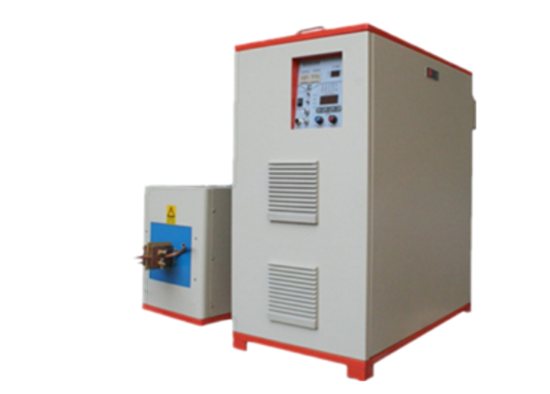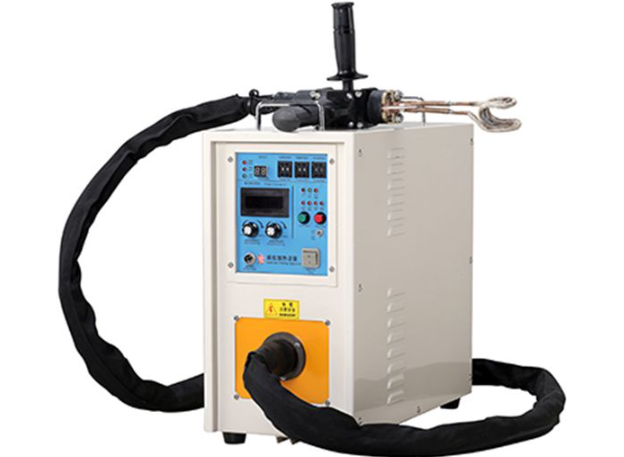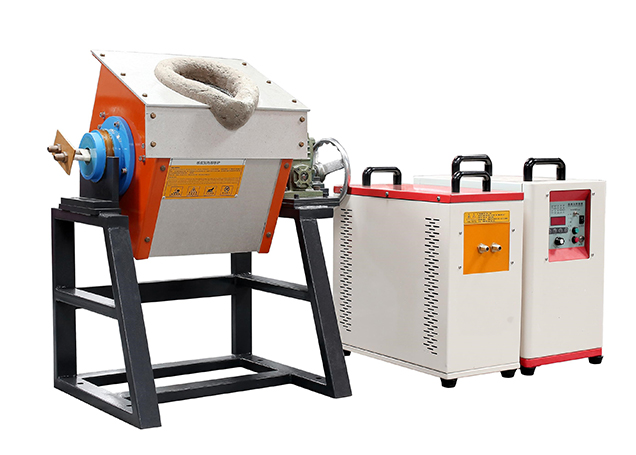Induction heating is a widely utilized process in various industries, including metal hardening, brazing, and forging. The effectiveness of this process largely depends on the frequency of the induction heating equipment used. In this article, we will explore the distinctions between medium and high-frequency induction heating equipment, focusing on their operating principles, applications, advantages, and considerations.
Operating Principles
Induction heating operates on the principle of electromagnetic induction, where an alternating current passes through a coil, generating a magnetic field that induces currents (eddy currents) in the workpiece. These eddy currents produce heat due to the electrical resistance of the material. The frequency of the alternating current significantly influences the depth of heat penetration and the heating characteristics of the workpiece.

Medium-Frequency Induction Heating
Medium-frequency induction heating equipment typically operates within the frequency range of 1 kHz to 10 kHz. This frequency range allows for deeper heat penetration into the workpiece, making it suitable for applications requiring uniform heating of larger or thicker materials. The key characteristics of medium-frequency induction heating include:
- Deeper Heat Penetration: The lower frequency enables heat to penetrate deeper into the workpiece, which is advantageous for processes like tempering, annealing, and hardening of larger components.
- Uniform Heating: Medium-frequency induction heating provides more uniform heating across the workpiece, reducing the risk of thermal stresses and ensuring consistent material properties.
- Suitable for Larger Workpieces: This frequency range is ideal for heating larger components such as shafts, gears, and pipes, where uniform heating is essential.
High-Frequency Induction Heating
High-frequency induction heating equipment operates at frequencies typically ranging from 60 kHz to 200 kHz. The higher frequency results in shallower heat penetration, making it suitable for surface treatments and applications requiring rapid heating. The key characteristics of high-frequency induction heating include:
- Shallow Heat Penetration: The higher frequency causes heat to concentrate near the surface of the workpiece, which is beneficial for surface hardening and brazing processes.
- Rapid Heating: High-frequency induction heating allows for quick heating cycles, reducing processing times and improving productivity.
- Ideal for Smaller Workpieces: This frequency range is well-suited for smaller components where only the surface needs to be heated, such as small gears, bearings, and shafts.
Applications
The choice between medium and high-frequency induction heating equipment depends on the specific requirements of the application:
- Medium-Frequency Applications:
- Tempering and Annealing: Used to relieve stresses and soften materials.
- Hardening of Large Components: Suitable for shafts, gears, and large diameter pipes.
- Forging: Ideal for heating large workpieces before forging processes.
- High-Frequency Applications:
- Surface Hardening: Enhances the hardness of the workpiece surface while maintaining a softer core.
- Brazing: Facilitates the joining of metals by melting a filler material.
- Small Component Heating: Suitable for small gears, bearings, and shafts requiring surface treatment.
Advantages and Considerations
Each frequency range offers distinct advantages and considerations:
Medium-Frequency Induction Heating:
Advantages:
- Deeper heat penetration allows for uniform heating of larger workpieces.
- Reduced risk of thermal stresses due to uniform heating.
Considerations:
- Longer heating times compared to high-frequency heating.
- Requires larger and more robust equipment.
High-Frequency Induction Heating:
Advantages:
- Rapid heating cycles improve productivity.
- Ideal for surface treatments of smaller components.
Considerations:
- Shallower heat penetration may not be suitable for larger workpieces.
- Potential for thermal gradients leading to residual stresses.
Aspect | Medium-Frequency Induction Heating | High-Frequency Induction Heating |
Frequency Range | 1 kHz to 10 kHz | 60 kHz to 200 kHz |
Heat Penetration | Deeper penetration, suitable for larger workpieces | Shallower penetration, ideal for surface treatments |
Heating Uniformity | Provides uniform heating across the workpiece | Concentrates heat near the surface |
Typical Applications | Tempering, annealing, hardening of large components, forging | Surface hardening, brazing, heating of small components |
Conclusion
Understanding the differences between medium and high-frequency induction heating machine is crucial for selecting the appropriate technology for specific industrial applications. Medium-frequency induction heating is ideal for larger workpieces requiring deep and uniform heating, while high-frequency induction heating is suited for surface treatments and smaller components. By carefully considering the specific requirements of the application, industries can optimize their heating processes for efficiency and quality.








